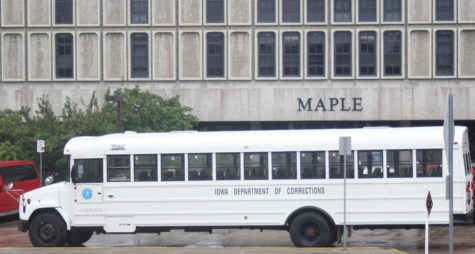DOR expresses concerns about on-campus housing, seeks solutions from IRHA
September 19, 2014
The Inter-Residence Hall Association received updates on the Department of Residence’s plans to house the 34,732 students on campus this year.
Peter Englin, director of the DOR, addressed issues about the student population at Iowa State and its effects on housing. He also discussed plans for the new residence hall coming to campus.
The new residence hall would be adjacent to Buchanan Hall and was approved for planning by the Board of Regents. The budget sits at about $49.5 million.
“With this growth and demand to live on campus, we knew we would have really big freshman classes,” Englin said. “We had a pretty good idea what those numbers were going to be, and now we’re looking at ways to meet that need.”
One issue Englin focused on pertained to the residence halls having an increased return rate of 9.8 percent last year.
He said 227 residence hall students did not recontract to live in dorms for spring 2014. Those students ended up coming to the DOR requesting a new contract to live in residence halls after their plans fell through for multiple reasons.
The DOR had to deny their requests, as it had to meet the needs of about 6,000 freshmen and 2,000 transfer students.
As a temporary solution, Englin said 1,059 beds are being leased off-campus and 436 den spaces are being used this year, putting Iowa State at 1,495 beds over permanent capacity.
Some students expressed concerns about those living in the dens.
“There are so many students living in the dens, and I don’t feel that’s an ideal situation for the Department of Residence to be in,” said Peter Meyers, senator for Government of the Student Body.
Englin said an alternative to putting students in the dens is to deny them a place to live on campus. He discussed the issue with the 2013-14 IRHA Parliament members, asking on what basis should students be denied–first come, first serve, returning students, transfers, etc.
The other alternative is leasing more living space like that of Legacy Tower and Maricopa to get students out of the dens. Building new residence halls are longterm commitments.
Meyers also expressed concerns regarding students living in dens potentially not having a place to live for the second semester.
“[The DOR] puts so many students in the dens, but then they’re basically told at the end of the first semester to go find somewhere else to live,” he said.
Englin said students living in dens get first choice when it comes to the spring semester, though, as there are typically between 800 and 1,100 vacancies in the residence halls for students to fill.
Overall, with an informal vote, IRHA members thought it best to keep leasing spaces for now, as deciding which students to deny a place to live was not favorable.
“I don’t know that it’s [rising on-campus occupancy] going to change much in the near future,” Englin said, “but one thing on the table is a new residence hall.”
Englin said the new dorm would hold approximately 700 beds. Each room would ideally hold two students and its own bathroom, while allowing students access to community sinks. The building would have to be taller than most residence halls, though, because of its location.
He doesn’t expect the university to break ground on the new residence hall until after the spring 2015 semester but hopes to see it built in late 2016 or early 2017.
“Last year, we asked you what you wanted,” Englin said. “That’s what we’re telling architects to build for you.”















